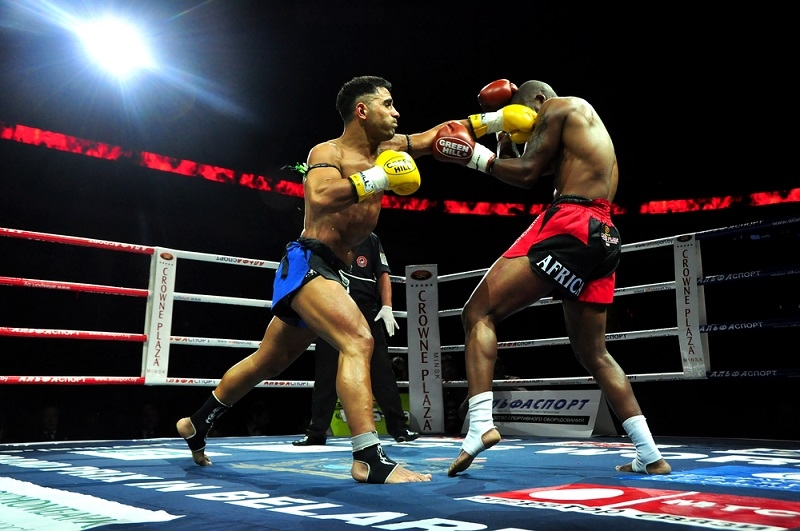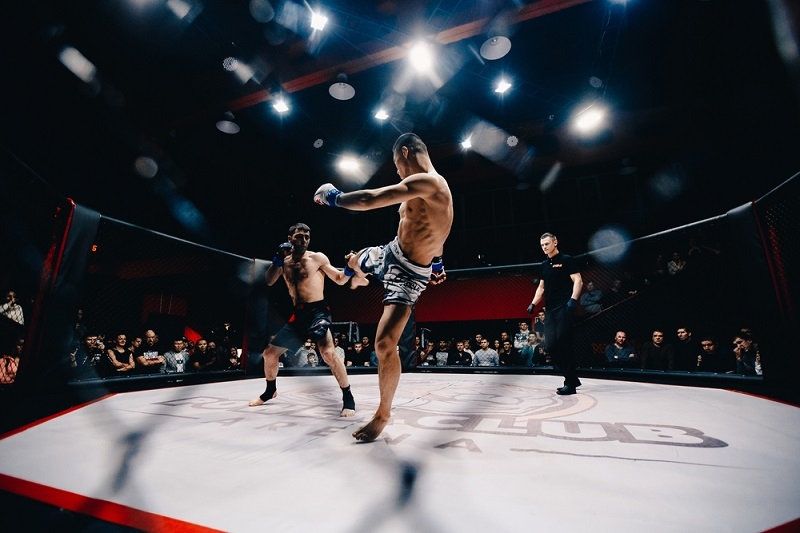Key Difference Between Boxing and Kickboxing Explained

Blog / Sep 25,2025
When people talk about combat sports, the difference between boxing and kickboxing often gets overlooked. Both look similar at first glance—fighters in gloves throwing strikes inside a ring—but the reality is that they are built on very different rules, techniques, and training demands. To really understand what is the difference between kickboxing and boxing, you have to look beyond the punches and pay attention to what each sport allows, how fighters prepare, and what makes one discipline harder than the other.
This article breaks down the boxing and kickboxing difference — rules, training, techniques, and culture. I’ll also take on a common debate: is boxing harder than kickboxing? Instead of vague claims, I’ll keep it straight and to the point, the way fighters actually talk about it.
Boxing: The Pure Striking Art
Boxing is stripped down to the essentials: two fighters, only fists allowed, aiming at the upper body and head. No kicks, no knees, no elbows. That restriction makes the sport sharper — you have fewer tools, but the demand for precision is sky-high.
What defines boxing

- Strikes: Only punches. Jab, cross, hook, uppercut, overhand.
- Targets: Above the waist. Torso and head only.
- Defense: Head movement, parries, footwork, blocks, guard.
- Rounds: Professional fights go up to 12 rounds, 3 minutes each.
- Scoring: Judges score clean hits, defense, ring control, and aggression.
The Rox Boxing guide on fouls makes it clear what you can’t do: no low blows, no rabbit punches, no hitting after the bell, no elbows, no holding and hitting. In other words, you stay within the clean, technical limits of hand-only fighting.
What makes boxing addictive is the depth within that simplicity. Every punch has to be set up with timing, angles, and movement. Fighters learn to create openings with just inches of space.
You may like: Mastering Effective Boxing Counter Combinations Now
Kickboxing: The Expanded Arsenal
Kickboxing looks like boxing at first — gloves, ring, rounds. But then the kicks start flying, and you realize it’s a whole other game. Punches, kicks, and often knees are all legal. Some styles even allow limited clinch fighting.
What defines kickboxing
- Strikes: Punches plus kicks, sometimes knees.
- Targets: Head, torso, and legs. Leg kicks are a major weapon.
- Defense: Checking kicks, blocking, footwork, and hand guard.
- Rounds: Usually shorter — 3 to 5 rounds, depending on rules.
- Scoring: Both punches and kicks score, so combinations matter.
Different rulesets change the details. American kickboxing forbids low kicks, while K-1 and Muay Thai embrace them. But the theme is always the same: you use your whole body to attack. That means training is heavier, tactics are wider, and mistakes can cost you more.
Boxing and Kickboxing Difference: The Breakdown
Let’s cut it clean: here’s where the two sports split.
1. Striking tools
- Boxing: Hands only.
- Kickboxing: Hands, legs, knees.
The boxing and kickboxing difference starts with that simple fact. In boxing, everything depends on your fists. In kickboxing, punches are just one part of a wider toolkit.
2. Stance and movement
Boxers angle their stance for quick pivots and head slips. That makes sense when only punches are coming at you. But that stance leaves legs wide open to kicks.
Kickboxers keep a more balanced stance. Feet are squared, ready to check or throw kicks. The footwork is less about slipping close and more about managing long range.
3. Defense
Boxing defense is built around the head and upper body. Bob, weave, slip, roll, block. In kickboxing, if you duck too far, you eat a knee. If you stand too square, you get chopped with leg kicks. Defense has to cover everything from the neck down.
4. Combinations
Boxers throw punch chains: jab–cross–hook, uppercut–hook–cross. Kickboxers mix: jab–cross–roundhouse, kick–punch–knee. The rhythm changes completely.
5. Fouls and rules
Boxing fouls are narrow because the sport itself is narrow. No hitting after the bell, no back-of-the-head shots, no elbows.
Kickboxing fouls depend on the style but cover more ground. No groin shots, no spine shots, no throws (unless Muay Thai rules), no holding forever in the clinch. The ref has more to watch.
Don’t Miss: Master Art of Boxing Roadwork with these Pro Tips & Tricks
Training: Different Bodies, Different Demands
The boxing and kickboxing difference shows up clearly in training.
Boxing training
- Focuses on upper-body conditioning.
- Endless rounds of bag work, mitts, shadowboxing.
- Footwork and head movement drilled constantly.
- Shoulders, arms, and core take the bulk of the load.
Kickboxing training
- Everything boxing has, plus kicking drills.
- Flexibility and balance work are mandatory.
- Leg conditioning — shins, hips, knees — becomes a priority.
- More risk of joint injuries if mobility is weak.
Where boxers get shoulder burn, kickboxers get leg bruises. Where boxers drill angles, kickboxers drill range control. The training reflects the weapon set.
Fitness, Self-Defense, and Goals
Both sports are brutal workouts. Which fits you better depends on what you want.
- Fitness: Kickboxing usually burns more because it’s full-body. Boxing still delivers intense cardio, especially with sparring.
- Self-defense: Kickboxing has more tools for different ranges. Boxing is lethal up close with hand speed and accuracy.
- Competition: If you dream of professional fighting, you stick to the lane you want. Boxing for boxing. Kickboxing if you want a wider striking game or even to feed into MMA.
Is Boxing Harder Than Kickboxing?
Now for the big question: is boxing harder than kickboxing? The answer depends on what you mean by “harder.”
Why boxing feels harder
- You only have punches, so mistakes get punished fast.
- The sport demands precision. One slip in timing and you’re caught clean.
- The sparring culture is unforgiving. Boxers often spar harder and longer.
Why kickboxing feels harder
- You juggle more weapons — hands, legs, knees.
- Defense is trickier because attacks come from all angles.
- Physically, the leg work adds another level of exhaustion.
So, is boxing harder than kickboxing? If you measure by intensity of hand skills and sparring pace, boxing might edge it. If you measure by overall physical load and technical variety, kickboxing takes the win. Most fighters agree: each is brutal in its own way.
More to Discover: Increase your Fitness with Personalized Nutrition for Boxing
Final Word
When people ask what is the difference between boxing and kickboxing, the answer is simple on the surface: kicks vs. no kicks. But the deeper boxing and kickboxing difference lies in how those rules shape stance, defense, training, and even culture.
Boxing is the art of mastering the fists, stripping combat down to pure precision. Kickboxing is about expanding the fight — legs, range, and combinations. Neither is “better.” Both are brutally demanding, and whether boxing is harder than kickboxing depends on your body, your goals, and how far you’re willing to push.
If you want laser-sharp punches and classic fight craft, go for boxing. If you want variety, distance control, and a full-body striking game, kickboxing is the way. Either way, step into the ring and you’ll find out quickly: there’s nothing easy about either sport.

